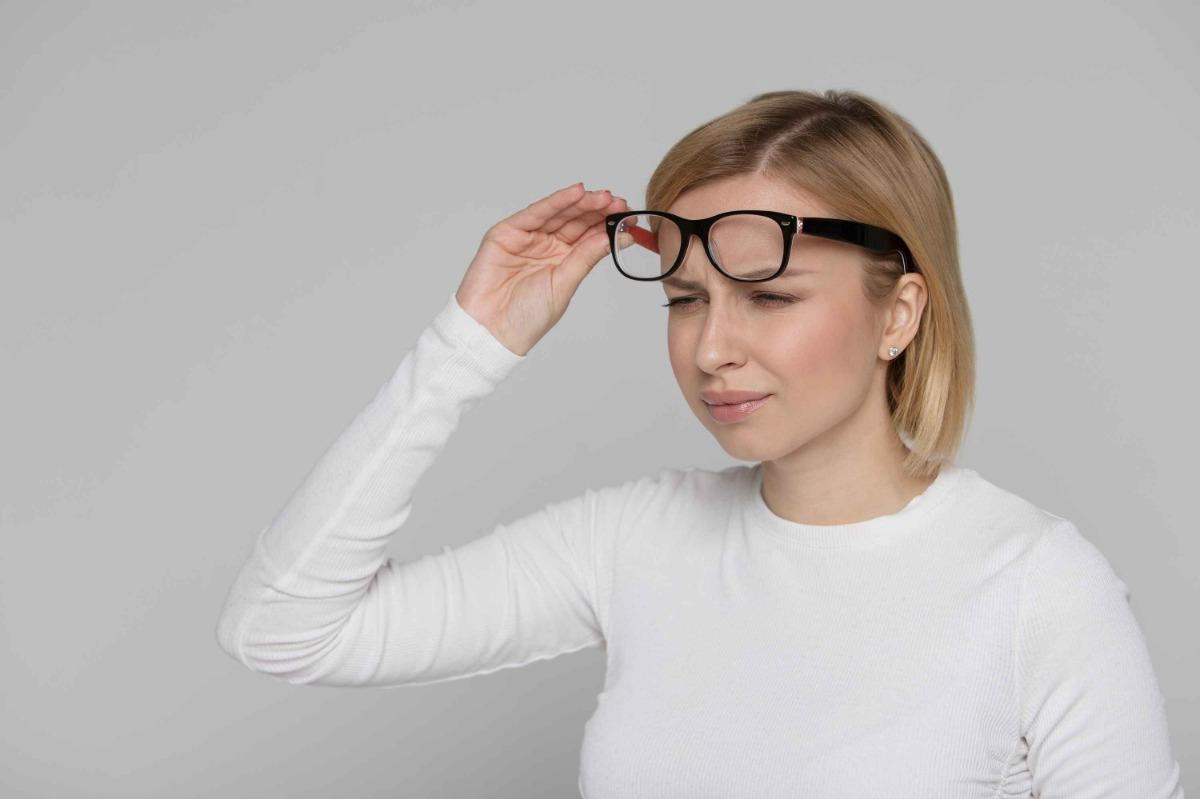Read Our Blog

Navigating the World of Presbyopia: Understanding and Overcoming Age-Related Vision Changes
- posted: Sep. 18, 2023
As we journey through life, our bodies go through a series of changes. One of the most common changes that occurs as we age is a gradual decline in our vision. One specific vision-related challenge that tends to surface in our 40s or 50s is presbyopia. Often referred to as the "aging eye" condition, presbyopia can impact our daily lives and activities. In this blog post, we'll delve into what presbyopia is, its causes, symptoms, and various options available to overcome its effects.
What is Presbyopia?
Presbyopia is a natural age-related vision condition that affects the ability of the eye to focus on close-up objects. Unlike myopia (nearsightedness) or hyperopia (farsightedness), which are caused by changes in the shape of the eyeball, presbyopia is due to the gradual hardening of the lens inside the eye. This lens is responsible for changing shape to focus on objects at different distances, and its loss of flexibility leads to difficulty in focusing on near objects.
Causes and Symptoms
Presbyopia is primarily a result of the natural aging process, affecting nearly everyone to some degree as they grow older. Some of the common symptoms of presbyopia include:
Difficulty Reading: One of the most noticeable signs is the struggle to read small print or text up close. People often find themselves holding reading materials at arm's length to make the text clearer.
Eye Strain: Engaging in close-up tasks like reading, using a smartphone, or working on a computer can cause eye strain, fatigue, and discomfort.
Needing Brighter Light: Individuals with presbyopia often require brighter lighting to read or perform tasks, as the eyes become less efficient at adjusting to lower light levels.
Managing Presbyopia
Thankfully, presbyopia doesn't mean bidding farewell to your favorite books or abandoning fine print forever. There are several effective ways to manage and overcome the challenges posed by presbyopia:
Over-The-Counter Reading Glasses: These reading glasses can provide a quick and inexpensive solution for some people. They are available in various magnification strengths, making it easier to focus on close-up objects. Whether this solution will work for you or not can be discussed with your eyecare provider.
Prescription Glasses: If you already wear glasses for other vision issues, your eye doctor can create prescription glasses that address both presbyopia and your existing vision needs.
Bifocals or Progressive Lenses: These lenses have multiple prescription strengths in a single lens, allowing you to see clearly at various distances. Bifocals have two strengths (usually for distance and reading), while progressive lenses offer a gradual transition between different strengths.
Contact Lenses: Multifocal contact lenses can provide another option for managing presbyopia. They work similarly to multifocal glasses, working to provide clearer vision at multiple distances.
Conclusion
Presbyopia is a natural part of the aging process that affects almost everyone. While it may bring some challenges to your daily life, there are numerous options available to help you continue enjoying all your favorite activities. Whether it's a stylish pair of reading glasses or multifocal contact lenses, the world of vision correction has evolved to cater to the needs of those with presbyopia. Remember, a regular eye exam is crucial to monitor your eye health and ensure that you're making the best choices for your vision needs.

Navigating the World of Presbyopia: Understanding and Overcoming Age-Related Vision Changes
- posted: Sep. 18, 2023
As we journey through life, our bodies go through a series of changes. One of the most common changes that occurs as we age is a gradual decline in our vision. One specific vision-related challenge that tends to surface in our 40s or 50s is presbyopia. Often referred to as the "aging eye" condition, presbyopia can impact our daily lives and activities. In this blog post, we'll delve into what presbyopia is, its causes, symptoms, and various options available to overcome its effects.
What is Presbyopia?
Presbyopia is a natural age-related vision condition that affects the ability of the eye to focus on close-up objects. Unlike myopia (nearsightedness) or hyperopia (farsightedness), which are caused by changes in the shape of the eyeball, presbyopia is due to the gradual hardening of the lens inside the eye. This lens is responsible for changing shape to focus on objects at different distances, and its loss of flexibility leads to difficulty in focusing on near objects.
Causes and Symptoms
Presbyopia is primarily a result of the natural aging process, affecting nearly everyone to some degree as they grow older. Some of the common symptoms of presbyopia include:
Difficulty Reading: One of the most noticeable signs is the struggle to read small print or text up close. People often find themselves holding reading materials at arm's length to make the text clearer.
Eye Strain: Engaging in close-up tasks like reading, using a smartphone, or working on a computer can cause eye strain, fatigue, and discomfort.
Needing Brighter Light: Individuals with presbyopia often require brighter lighting to read or perform tasks, as the eyes become less efficient at adjusting to lower light levels.
Managing Presbyopia
Thankfully, presbyopia doesn't mean bidding farewell to your favorite books or abandoning fine print forever. There are several effective ways to manage and overcome the challenges posed by presbyopia:
Over-The-Counter Reading Glasses: These reading glasses can provide a quick and inexpensive solution for some people. They are available in various magnification strengths, making it easier to focus on close-up objects. Whether this solution will work for you or not can be discussed with your eyecare provider.
Prescription Glasses: If you already wear glasses for other vision issues, your eye doctor can create prescription glasses that address both presbyopia and your existing vision needs.
Bifocals or Progressive Lenses: These lenses have multiple prescription strengths in a single lens, allowing you to see clearly at various distances. Bifocals have two strengths (usually for distance and reading), while progressive lenses offer a gradual transition between different strengths.
Contact Lenses: Multifocal contact lenses can provide another option for managing presbyopia. They work similarly to multifocal glasses, working to provide clearer vision at multiple distances.
Conclusion
Presbyopia is a natural part of the aging process that affects almost everyone. While it may bring some challenges to your daily life, there are numerous options available to help you continue enjoying all your favorite activities. Whether it's a stylish pair of reading glasses or multifocal contact lenses, the world of vision correction has evolved to cater to the needs of those with presbyopia. Remember, a regular eye exam is crucial to monitor your eye health and ensure that you're making the best choices for your vision needs.
Locations
Office & Optical Hours
Office Hours
Monday, Tuesday, Friday
9:00 am - 5:30 pm
Wednesday, Saturday
8:30 am - 3:00 pm
Thursday
9:00 am - 7:00 pm
Sunday
Closed
Optical Hours
Monday, Tuesday, Friday
9:00 am - 4:30 pm
Wednesday, Saturday
8:30 am - 2:00 pm
Thursday
9:00 am - 6:00 pm
Sunday
Closed


